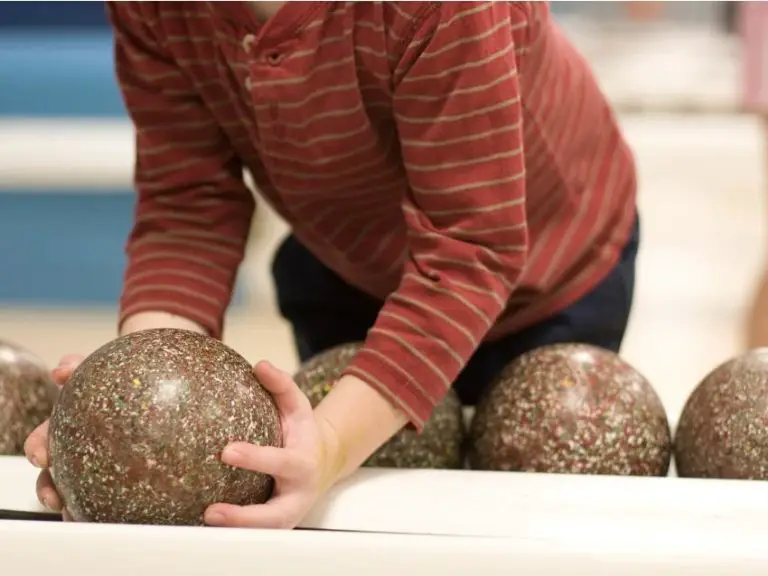What Equipment Do You Need for Duckpin Bowling: A Complete Guide
If you’re looking for a unique bowling experience, duckpin bowling might be just what you’re looking for. This sport is similar to regular bowling, but with a few key differences that make it a fun and challenging game. One of the first things you might be wondering is what equipment you need to get started.
The good news is that you don’t need much to get started with duckpin bowling. The basic equipment you’ll need includes bowling balls, pins, and a lane to play on. However, there are a few unique aspects to duckpin bowling equipment that you should be aware of. For example, the balls used in duckpin bowling are smaller and lighter than those used in regular bowling. Additionally, the pins used in duckpin bowling are shorter and wider than those used in regular bowling.
Overall, duckpin bowling is a fun and unique sport that is worth trying out if you’re looking for a new bowling experience. While the equipment used in duckpin bowling is slightly different than regular bowling, it’s not difficult to get started and you can find everything you need at your local bowling center.
Understanding Duckpin Bowling
Duckpin bowling is a unique and fun variation of ten-pin bowling that originated in Baltimore, Maryland in the early 1900s. It quickly gained popularity on the East Coast and has since spread to other parts of the country. In duckpin bowling, players use smaller balls and shorter, squatter pins than in traditional ten-pin bowling. The game also has different rules and scoring, presenting a new set of challenges for bowlers.
History and Origins
Duckpin bowling was invented by Wilbert Robinson and John McGraw, who were both members of the Baltimore Orioles baseball team. They wanted to create a bowling game that was more challenging and exciting than traditional ten-pin bowling. The game quickly became popular in Baltimore and other parts of Maryland, and eventually spread to other states on the East Coast.
Rules and Scoring
Duckpin bowling has its own set of rules and scoring that differ from traditional ten-pin bowling. The game consists of 10 frames, and each frame consists of three rolls. The maximum score for each frame is 30, and the maximum score for the game is 300. Strikes and spares work the same way as in ten-pin bowling, but the scoring system is different.
The Duckpin Bowling Lane
The duckpin bowling lane is similar to a ten-pin bowling lane, but with some key differences. The lane is 60 feet long, and has gutters on either side. The gutters are smaller than in traditional ten-pin bowling, and the pins are arranged in a triangle shape at the end of the lane. The lane is also oiled to create different lane conditions and make the game more challenging.
Equipment Specifics
Duckpin bowling requires specific equipment, including duckpin balls, bowling shoes, and pins. The balls are smaller and lighter than traditional ten-pin bowling balls, weighing between 2 and 4 pounds. The pins are shorter and squatter than traditional ten-pin bowling pins, and are made of a combination of rubber and wood.
Gameplay Techniques
To play duckpin bowling, you need to have good aim, roll, power, control, and grip. You also need to have a good approach, release, stance, spin, and hook. Precision and accuracy are important for scoring, and ball speed can also affect your score. There are different strategies you can use to improve your game, such as focusing on spares and strikes, and aiming for the pocket or headpin.
Duckpin Bowling Variations
There are several variations of duckpin bowling, including ten-pin bowling, candlepin bowling, mini bowling, and regular bowling. Each variation has its own unique rules and equipment, and presents a different challenge for bowlers. Duckpin bowling is a fun and challenging game that can be enjoyed by people of all ages and skill levels.
Playing Duckpin Bowling
To play duckpin bowling, you need to follow the basic rules and scoring system, and use the correct equipment. You also need to practice your technique and strategy, and aim for spares and strikes to improve your score. Duckpin bowling can be played for fun or competition, and can be enjoyed by individuals or teams.
Duckpin Bowling Culture
Duckpin bowling has a rich history and culture, and is a beloved pastime on the East Coast. The National Duckpin Bowling Congress (NDBC) is the governing body of the sport, and promotes its growth and popularity. Duckpin bowling alleys can be found in many cities and towns, and offer a unique and fun experience for bowlers.
Improving Your Game
To improve your duckpin bowling game, you can practice your technique and strategy, and focus on spares and strikes. You can also work on your finesse, aiming, and pin count, and try different approaches and releases. Watching other bowlers and getting tips from experts can also help you improve your game.
Duckpin Bowling for Beginners
Duckpin bowling is a great game for beginners, as it is easy to learn and offers a fun and unique experience. The basic rules and scoring system are simple to understand, and the smaller balls and pins make the game less intimidating for new players. Beginners can focus on improving their technique and strategy, and gradually work their way up to more advanced gameplay.
Advanced Duckpin Bowling Strategies
Advanced duckpin bowling strategies include focusing on spares and strikes, aiming for the pocket or headpin, and using different approaches and releases. Precision and accuracy are important for scoring, and ball speed can also affect your score. Advanced bowlers can also try different variations of the game, and compete in tournaments and leagues.
The Future of Duckpin Bowling
Duckpin bowling continues to grow in popularity, and is enjoyed by people of all ages and skill levels. The NDBC is working to promote the sport and increase its visibility, and new duckpin bowling alleys are opening up in different


